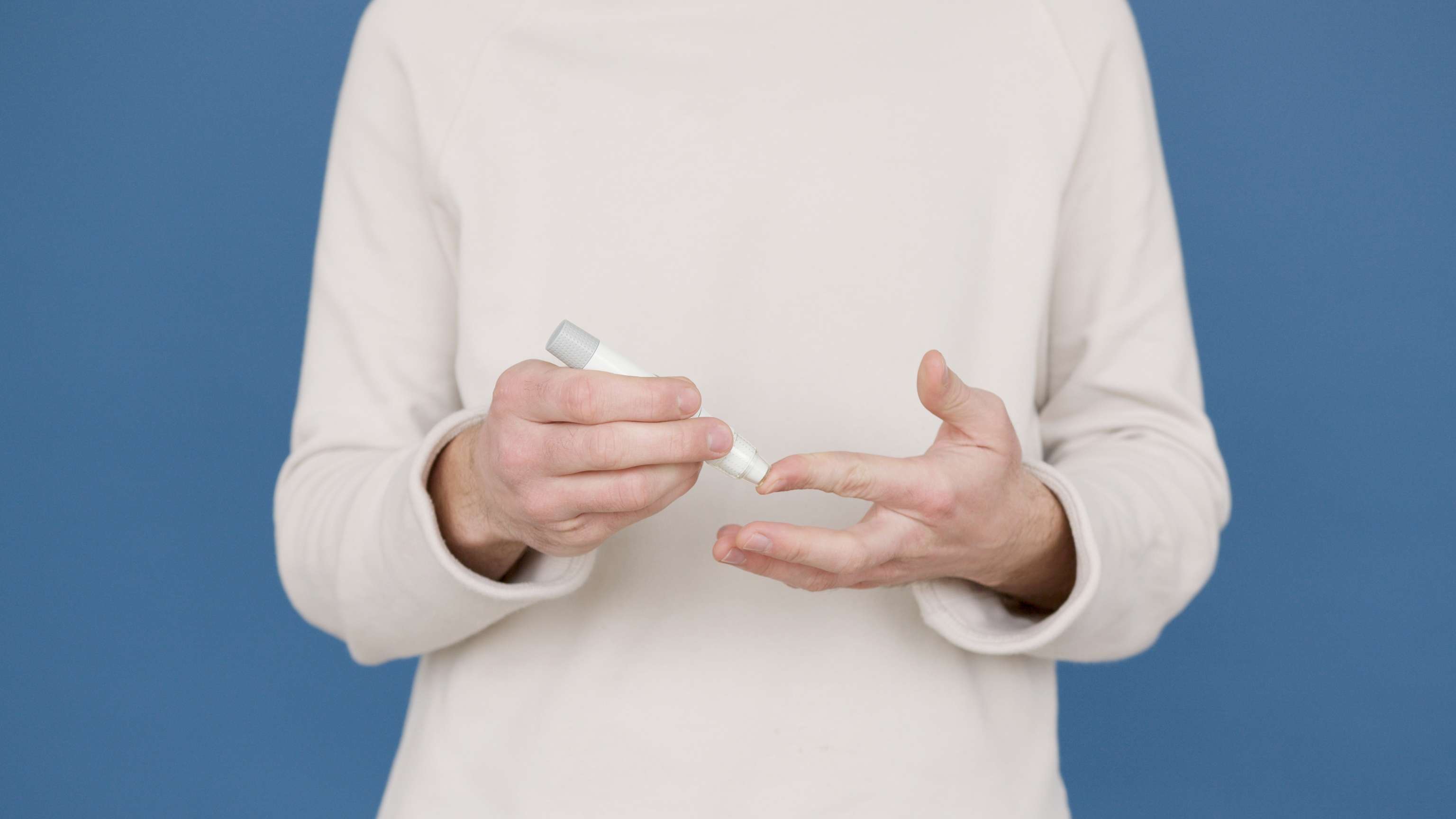Does mifepristone improve insulin sensitivity in insulin resistance?

Insulin resistance:
Insulin resistance is highest in the early morning due to the release of insulin antagonists (i.e., inhibit the action) during the night. During the day, a second, somewhat weaker increase in insulin resistance occurs in the late afternoon. In the case of insulin resistance, the body's own cells (especially in the insulin-dependent organs) react less to the hormone insulin compared to people without insulin resistance. The hormone is produced by so-called beta cells in the pancreas and distributed into the blood when necessary. There it ensures that the sugar (i.e. glucose) in the blood reaches the body's cells for energy. In type 2 diabetes, the pancreas still produces enough insulin at the beginning, although body cells in the muscles, liver and fatty tissue are less sensitive to it. This reduces the binding sites for insulin on cell surfaces. This condition is therefore also known as insulin resistance. Subsequently, the relative lack of insulin causes even more insulin to be produced.
In this context, cortisol is a significant regulator of glucose and lipid metabolism. Important hormones in this context are glucocorticoids, which in glucose metabolism promote the conversion of protein into glucose and glycogen. Furthermore, the hormone impairs insulin secretion and insulin sensitivity by acting at specific receptors (i.e. glucocorticoid receptor) found in almost all body cells. The drug investigated in the study Mifepristone is an antagonist that could improve glucose tolerance and insulin sensitivity by blocking these receptors.
Mifepristone against insulin resistance:
The prospective, randomized, double-blind, placebo-controlled crossover study published in the scientific journal The Journal of Clinical Endocrinology and Metabolism in 2021 examined obese individuals with glucose intolerance. Study participants (hereafter: study subjects) were randomly assigned to two groups. While the intervention group received mifepristone in 50 mg capsules every 6 hours, the control group took a placebo at the same interval spread over 9 days. The low dose of mifepristone was used to avoid possible adrenal insufficiency. The treatment phase was interrupted with a washout period of 6 to 8 weeks, after which the treatment was continued for another 9 days in the other group, which also switched the study group to the control group. Study participants were evaluated at the National Institutes of Health clinical center in the United States. The primary end goal was a change in insulin sensitivity.
Inclusion criteria were:
- Men and women aged 35 to 70 years.
- BMI value of 25 to 37 kg/m^2
- Prediabetes or mild diabetes prior to study entry.
Exclusion criteria:
- Cushing's syndrome (i.e., elevated blood cortisol levels).
- More than 2 (female) or 3 (male) alcoholic beverages per day
- Pregnant and breastfeeding women
- Taking blood glucose-lowering agents in the last 3 months before the start of the study
- Uncontrolled hypertension
- Non-stable health conditions (e.g.: severe respiratory failure)
- Severely elevated liver function tests
- Severe renal disorders
- And similar
During this process, all participants recorded any side effects and reported them to the study staff. Two weeks prior to the intervention phase, participating subjects were not to start any new diets. After both treatment phases, subjects returned for a safety check at approximately 1 week and again at 3 weeks. Here, renal and liver function were measured, blood counts were examined, and any side effects were addressed.
Reduced insulin resistance:
Taking mifepristone did not change the glucose availability of insulin sensitivity and had no effect on insulin production. Thereby, blockade of specific receptors (i.e., glucocorticoid receptors) significantly improved adipose tissue insulin sensitivity values and reduced fasting-state adipose tissue insulin resistance.
Conclusion:
However, the study registered certain limitations, according to researchers. Since the number of subjects was not high, other certain influences of mifepristone could possibly be overlooked. Also, because the intervention period was quite short, no firm conclusions can be drawn about a long-term effect of mifepristone on weight, side effects and blood glucose control. Based on the study results, short-term therapy with mifepristone could improve insulin sensitivity of adipose tissue in obese individuals with prediabetes or type 2 diabetes. In this regard, researchers have assigned a key role to glucocorticoid receptors with respect to insulin resistance, which may offer new targets in therapeutic treatments for insulin resistance.
Sources
- Gubbi, S., Muniyappa, R., Sharma, S. T., Grewal, S., McGlotten, R., & Nieman, L. K. (2021). Mifepristone Improves Adipose Tissue Insulin Sensitivity in Insulin Resistant Individuals. The Journal of clinical endocrinology and metabolism, 106(5), 1501–1515.
- Diabetes Mellitus Typ-2
- Diabetes Prävalenz (diabetesde.org)

Danilo Glisic
Last updated on 27.06.2022
Your personal medication assistant
Browse our extensive database of medications from A-Z, including effects, side effects, and dosage.
All active ingredients with their effects, applications, and side effects, as well as the medications they are contained in.
Symptoms, causes, and treatments for common diseases and injuries.
The presented content does not replace the original package insert of the medication, especially regarding the dosage and effects of individual products. We cannot assume liability for the accuracy of the data, as the data has been partially converted automatically. Always consult a doctor for diagnoses and other health-related questions.
© medikamio